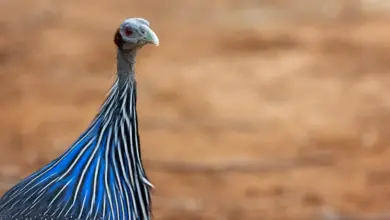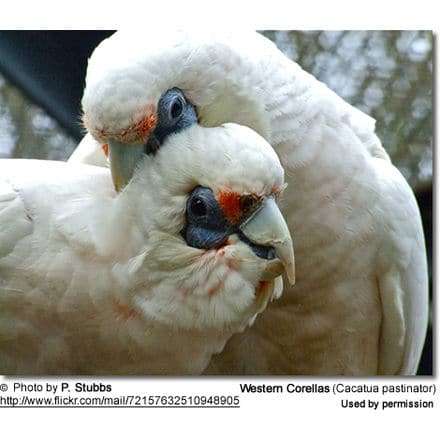Rufous Sabrewings
The Rufous Sabrewings (Campylopterus rufus) are hummingbirds found in the highlands of northern Central America.
The Sabrewing family was named for their long, saber-like outermost primary flight feathers, which are thickened, flattened, and bent at an angle.
Distribution / Habitat
The Rufous Sabrewings are found along the Pacific slope of Mexico (eastern Oaxaca and Chipas), southern Guatemala, and El Salvado, where they inhabit the interior and edges of humid pine and pine-oak forests, humid evergreen forests, heavily degraded former forests, partially wooded canyons, as well as plantations.
They are most abundant above 4,200 feet (~1,300 meters), but can occur at elevations from 3,000 – 6,600 feet (900 – 2,000 meters).
These hummingbirds appear to be sedentary (non-migratory), except for some altitudinal movements in response to the flowering seasons of their favorite feeding plants.
Description
Rufous Sabrewings measure about 5 – 5.5 inches (12.5 – 14 cm) in length (including the rounded tail), and the larger males weigh, on average, 0.32 oz (9 grams) and females 0.23 – 0.24 oz (6.6 – 6.9 grams). Other than a size difference, males and females look similar.
The upper plumage is glossy green bronze, and below they are pale cinnamon-colored. There is a white spot behind each eye. The black bill is slightly down-curved.
Similar Species
The only hummingbird species that they could possibly be confused with is the Rufous-Breasted Sabrewing (Campylopterus hyperythrus) – however their ranges don’t overlap. The latter is restricted to the South American countries of Venezuela, Guyana, and Brazil.
Hummingbird Resources
- Hummingbird Information
- Hummingbird Amazing Facts
- Attracting Hummingbirds to Your Garden
- Hummingbird Species
- Feeding Hummingbirds
Diet / Feeding
The Rufous Sabrewings mostly feed at lower levels, particularly in the dense understory and in partially open areas.
They primarily feed on nectar taken from a variety of brightly colored, scented small flowers of trees, herbs, shrubs, and epiphytes, such as Plantago, Erythrina, Salvia, and Castilleja. They favor heliconia and banana flowers, but may also visit some flowers that open during the night for bats.
They favor flowers with the highest sugar content (often red-colored and tubular-shaped) and seek out, and aggressively protect, those areas containing flowers with high-energy nectar. They use their long, extendible, straw-like tongues to retrieve the nectar while hovering with their tails cocked upward as they are licking at the nectar up to 13 times per second. Sometimes they may be seen hanging on the flower while feeding.
Many native and cultivated plants on whose flowers these birds feed heavily rely on them for pollination. The mostly tubular-shaped flowers actually exclude most bees and butterflies from feeding on them and, subsequently, from pollinating the plants.
They may also visit local hummingbird feeders for some sugar water, or drink out of bird baths or water fountains where they will either hover and sip water as it runs over the edge; or they will perch on the edge and drink – like all the other birds; however, they only remain still for a short moment.
They also take some small spiders and insects – important sources of protein particularly needed during the breeding season to ensure the proper development of their young. Insects are often caught in flight (hawking); snatched off leaves or branches, or taken from spider webs. A nesting female can capture up to 2,000 insects a day.
Males establish feeding territories, where they aggressively chase away other males as well as large insects – such as bumblebees and hawk moths – that want to feed in their territory. They use aerial flights and intimidating displays to defend their territories.
Breeding / Nesting
Most breeding activities are observed between April and May.
Hummingbirds in general are solitary and neither live nor migrate in flocks; and there is no pair bond for this species – the male’s only involvement in the reproductive process is the actual mating with the female.
During the breeding seasons, male Sabrewings typically gather in leks (competitive mating display) consisting of up to 10 males (most often 4 to 6). The males will sing to the females to gain their goodwill. They may fly in front of them in a U-shaped pattern.
The male will separate from the female immediately after copulation. One male may mate with several females. In all likelihood, the female will also mate with several males. The males do not participate in choosing the nest location, building the nest, or raising the chicks.
The female Sabrewing is responsible for building the fairly large cup-shaped nest out of plant fibers woven together and green moss on the outside for camouflage in a protected location in a shrub, bush, or tree – usually situated over a stream. She lines the nest with soft plant fibers, animal hair, and feathers down, and strengthens the structure with spider webbing and other sticky material, giving it an elastic quality to allow it to stretch to double its size as the chicks grow and need more room. The nest is typically found on a low, thin horizontal branch.
The average clutch consists of one white egg, which she incubates alone for about 15 – 16 days, while the male defends his territory and the flowers he feeds on. The young are born blind, immobile, and without any down.
The female alone protects and feeds the chicks with regurgitated food (mostly partially digested insects since nectar is an insufficient source of protein for the growing chicks). The female pushes the food down the chicks’ throats with her long bill directly into their stomachs.
As is the case with other hummingbird species, the chicks are brooded only the first week or two and are left alone even on cooler nights after about 12 days – probably due to the small nest size. The chicks leave the nest when they are about 23 – 26 days old.
Calls / Vocalizations / Sounds
While feeding, they make sharp twitter or “chip’ sounds. Their calls are described as sharp twitters. The males’ songs are high-pitched piercing cheep tsew cheep tik-tik tsew.
Sound Recordings
Alternate (Global) Names
Chinese: ????? … Czech: Kolibrík pestroocasý, kolib?ík pestroocasý … Danish: Kanelfarvet Sabelvinge … Dutch: Rode Sabelvleugel … Finnish: Ruskosapelikolibri … French: Campyloptère roux … German: Buntschwanz-Degenflügel … Italian: Campilottero rossiccio, Sciabolatore rossiccio … Japanese: chabarakembanehachidori, chabarakenbanehachidori … Norwegian: Rustsabelvinge … Polish: zapylak rdzawy … Russian: ??????? ????????? … Slovak: kolibrík hrdzavý … Spanish: Ala de Sable Rufo, Colibrí Rojizo Mexicano, Fandangero Rufo, Fandanguero Rojizo … Swedish: Rostsabelvinge



